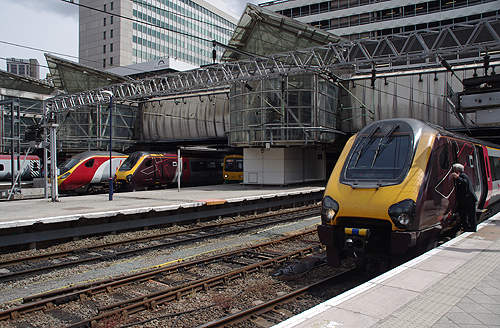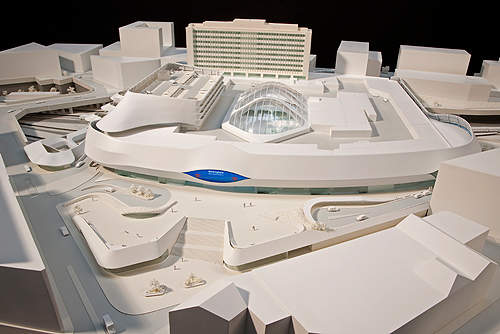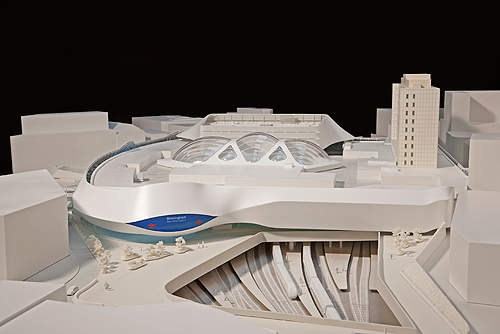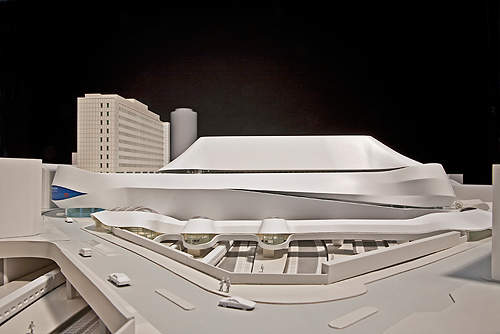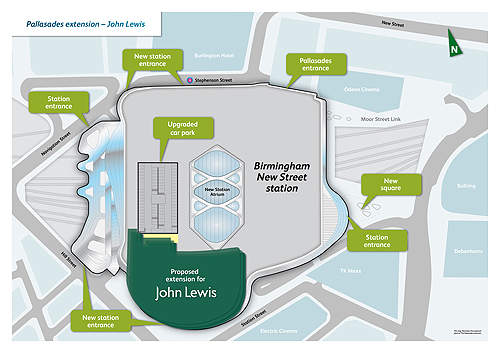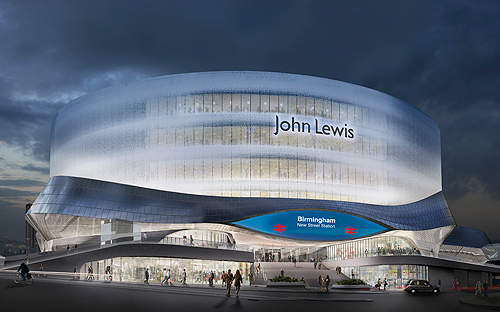The Birmingham New Street Station is an important hub and gateway to towns and cities across the UK. It serves long-distance trains from London’s Euston Station to the north of the country, from south and south-west England to Scotland, Newcastle, Manchester and Liverpool.
It provides east-west services to and from East Anglia and Central Wales, and is a major hub for local and suburban services.
The existing station was designed and built during the 1960s to serve approximately 60,000 passengers a day. It is currently visited by 170,000 passengers a day, which causes congestion at the platforms during peak hours.
Station operator Network Rail redeveloped the station to cater for future increases in passengers visiting the station.
Known as the Gateway Project, it increased the station’s capacity and train facilities by 50% between Birmingham, London and Coventry, while reducing journey times from Birmingham to Scotland and Birmingham to Milton Keynes.
Construction of the New Street station began in 2009 and was fully completed in September 2015. The construction activity created more than 3,000 jobs.
Redevelopment project
The £750m Birmingham New Street Station redevelopment project was delivered by Network Rail in cooperation with Birmingham City Council, the Department for Business, Innovation and Skills, Centro (the region’s transport authority) and the UK’s Department for Transport (DfT).
DfT and Department for Business, Innovation and Skills have contributed £400m and £100m, respectively, towards the project.
History of Birmingham New Street Station
The original Birmingham New Street Station was opened by London and North Western Railway (LNWR) in 1854. It comprised a trussed arch designed by AE Coowper of Fox Henderson and Co. The station’s roof was 211ft-wide and 840ft-long.
The station was rebuilt in 1960s after the World War II bombings. It was designed by Kenneth J Davies of British Rail Midland Region. It contains Pallasades Shopping Centre, a nine-storey office block and a car park above the station platforms.
Alongside the station is the 20-storey Stephenson Tower, which is owned by Network Rail and managed by Birmingham City Council.
Design and construction
The Birmingham New Street Station redevelopment was designed by Foreign Office Architects. WS Atkins is the project lead consultant and Mace the delivery partner.
The station was redeveloped in two phases. Phase one included construction of a new concourse at the existing car park above the station platforms. Preparatory works for this phase began in September 2009 and the concourse was opened in April 2013.
Phase two witnessed the closure of the existing concourse, which was expanded to three and half times its current size of 10,500m². It is enclosed by a giant-size, light-filled atrium providing access to clearer and brighter platforms. The busiest platforms, 8 and 9 were widened. Phase two was completed in mid-2015.
The car park demolition work was awarded to Perry Barr-based engineers Coleman & Company, which in turn subcontracted RMD Kwikform for special trusses and East Midlands Diamond Drilling for Tyrolit wire-sawing technology.
Seeing as the station needs to be operated regularly, the concrete was removed block by block, and lifted by using Tyrolit wire-sawing technology and special trusses. Around 7,500t of concrete was removed, of which 85% is recyclable and is reused in the construction of the new concourse.
Located at the west end of the station, the Navigation Street footbridge was extended to platform 12, creating an entrance and a second exit to Hill Street. The bridge provides access from platform 2 to 11, resulting in congestion for passengers moving to and from platform 1 and 12.
The new station also features a 250,000ft² John Lewis store on the south side of the existing Pallasades shopping centre. The store was constructed on the site of the Stephenson Tower and is the largest store outside London, with four floors. It was designed by the station architect. Planning consent was sent for approval in 2011, and the store was opened in 2014.
Stephenson Tower was broken down piece by piece in a period of six months to make way for the new store. A 200m² station exterior area was unveiled in March 2011. It is built of mirror-polished stainless-steel.
Birmingham New Street Station services
Birmingham New Street Station is serviced by trains operated by Arriva Trains Wales, CrossCountry, First Great Western, London Midland and Virgin Trains.
The redeveloped station added 92 extra trains to the existing fleet. In addition, 106 carriages were brought in to increase the length of the pendolinos that operate between Birmingham, London and the West Coast Main Line.
Arriva brought in 40 extra coaches and increased the capacity by 3,000 passenger seats a day.
Station facilities
Birmingham New Street Station’s facilities include a ticket office, toilets, showers and baby changing, a lost property and left luggage office, food and drink outlets, Wi-Fi, long and short stay parking, accessible parking, and cycle parking.
As part of the station’s redevelopment, the platform escalators were increased from five to 36, public lifts from two to 15 and pedestrian entrances from two to eight.

